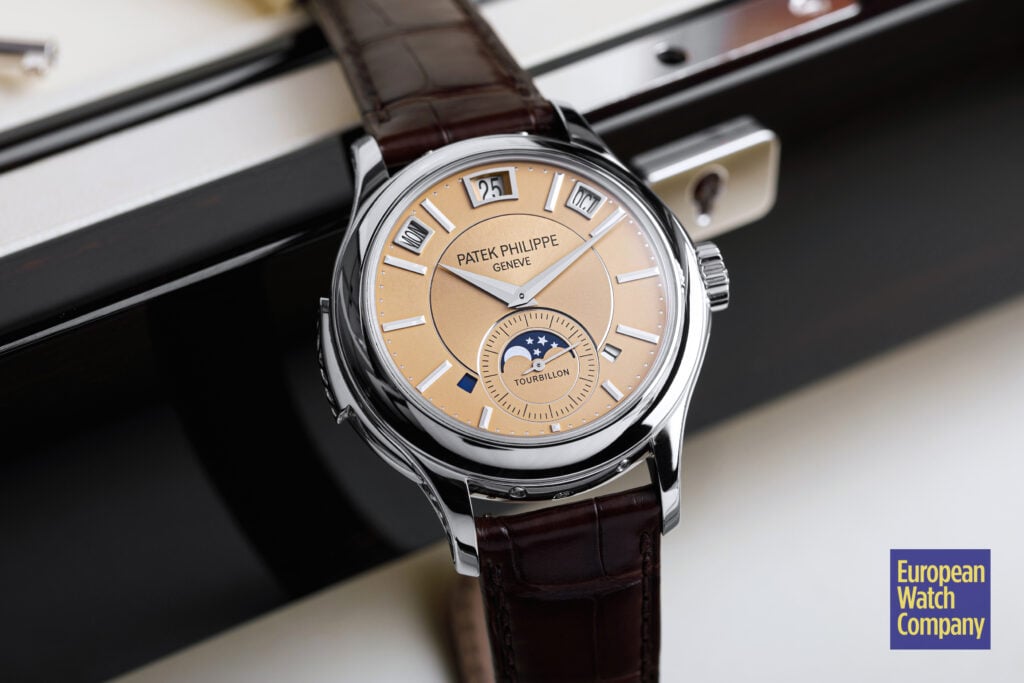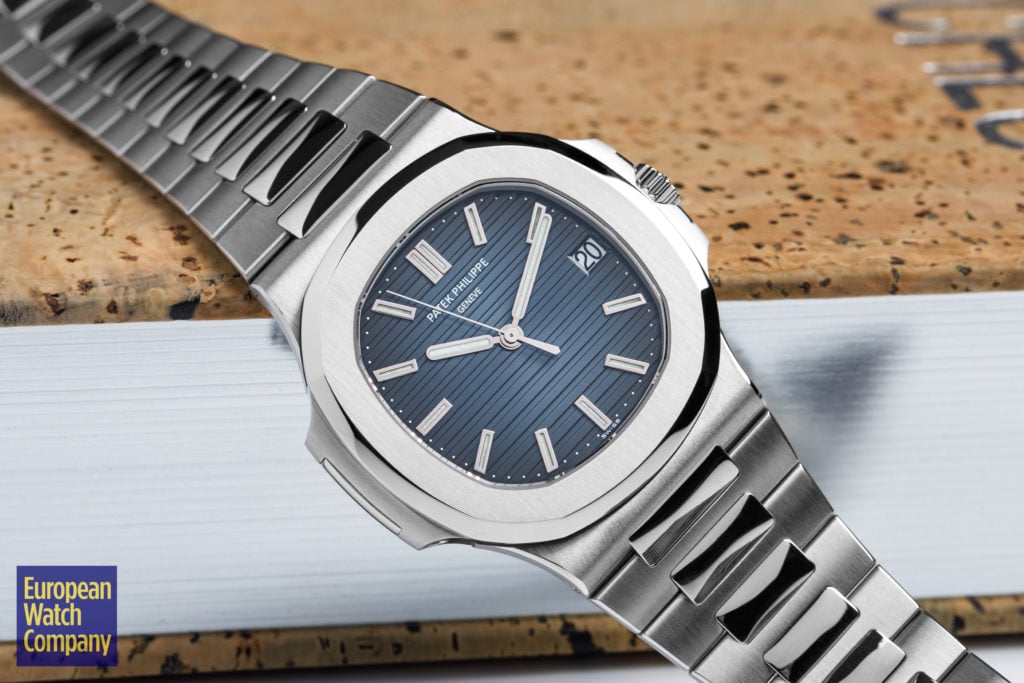Patek Philippe 101: Your Crash Course
Patek PhilippePublished by: Samuel Colchamiro
View all posts by Samuel Colchamiro
Patek Philippe has an unrivaled reputation in the high horology sector of the industry. The brand’s heritage and archive of watches is extensive, and the range of offerings, from the simplest Calatrava to the most elaborate Grand Complication can be overwhelming. Today, we will highlight the essential information you should know about Patek Philippe before you buy your next watch. This brand has a history and a heritage that is every bit as special as the watches they produce to this day.

History
Before Patek Philippe was Patek Philippe, the brand was registered as Patek, Czapek & Cie, named for the founders of the company in 1839. Early in the brand’s history, they were making strides in the mechanical space. In 1845, the company registered a patent for a keyless winding system for pocket watches, making for a significant practical advantage to the previous “keyed” winding of old. In 1851, Patek was renamed Patek, Philippe & Cie, and by 1868, the brand produced what is credited as being the very first Swiss wristwatch.

Innovation in the world of complications continued in rapid succession when Patek Philippe patented the perpetual calendar complication for pocket watches in 1889. Just a few years later, the brand also patented the double chronograph. By 1923, Patek had sold the first split-seconds chronograph wristwatch. Just two years later, they created their first perpetual calendar wristwatch.

While Patek had made a large impact on the mechanical watch industry, the Great Depression raised significant concerns for the future of the brand. To help stabilize the company, in 1932, Jean and Henri Stern invested in the Patek brand, wishing to help change the trajectory of the company to weather the storm. That year, Patek introduced a simpler format of watch, the iconic Calatrava. Following the milestone integration of the Stern family into the Patek brand, Patek exploded in offerings, emphasizing the serial production of high complications and expanding their collections. This was the birth of the modern Patek Philippe brand identity.

Design Details
With time, the design of Patek Philippe has evolved with the ages. That said, several underlying characteristics overshadow all Patek watches. Firstly, the brand has a decided slant toward dress. Even the most sports-oriented watches have a dressy quality. This dress presence may be most accurately defined by its elegant and flowing case profile that makes the watches look slim and refined.

Perhaps this styling can best be understood when comparing the Lange Datograph and the Patek 5170. While the Datograph is bold and thick in its wrist presence, Patek has opted for a sleek appeal. This caters to a specific type of collector, where Lange may be preferred by another.

Patek is a master of complications, and often designs revolve around complication layout. The traditional formats such as three-register perpetuals, time-only minute repeaters, and dual register chronographs help to underscore the underlying prioritization of history and heritage. Every Patek timepiece produced today takes inspiration from the brand’s archive of past references. This means that modern pieces are often a blending of influences both from modern stylistic trends and the brand’s own past. This is part of why the brand is so popular and well respected in the broader watch culture. Marques that respect their history are the most successful in maintaining an identity as a brand and an entity in the industry.

Inner Workings
The movements of Patek watches are truly where they shine. What Cartier is to jewelry design, Patek Philippe is to movement design and execution. The company has released a plethora of movements from time-only formats to mega Grand Complications, spanning wrist and pocket watches.

The movement finish of a Patek is an impressive sight, incorporating Geneva stripes, mirror anglage, and perlage. One of the best movements to demonstrate the classic Patek aesthetic is the caliber 240. Automatic winding with a micro rotor, the caliber was introduced in 1977 in the ellipse collection to provide an ultra thin mechanism to outfit the Patek watches. This movement resided within the legendary reference 3940 alongside others, and remains in production to this day. Caliber 240 encompasses much of what has made Patek Philippe great as a movement finisher.

With time, Patek has adopted a full line of in-house movements, abandoning the previous practice of purchasing third party movements and reworking and refinishing them to meet the brand’s standards. Prior to the in-house watchmaking spell, the brand was working with Lemania and Valjoux movements predominantly. Many of the company’s most famous watches used these movements, such as the reference 5970, outfitted with a modified Lemania base caliber.

Personality
It’s interesting to me to observe how many collectors of Patek are also collectors of art. Those of refined taste, who appreciate the fine details and the history of fine Swiss watches are the ones that are magnetically drawn to Patek.

While this is generally true overall, there is now somewhat of a divide in customer base between two distinct spheres of models. The core dress models certainly appeal to this discerning enthusiast, but the other side is the sports offerings. Appealing much more to the hype of integrated bracelet stainless steel sports watches, the Nautiluses and Aquanauts introduced a new clientele to the brand. This is similar to say the Odysseus for Lange. The brand’s popularity and general recognition have exploded as a result of the auctions and other fanfare surrounding the 5711 in particular and the Tiffany variants of various pieces.

While this may be a temporary reality, the truth is that as long as Patek Philippe remains committed to its core mission, the clients that want that core set of offerings will remain the brand’s patrons. We have yet to see truly how much the hype influences the product development end and the brand’s collections in the aggregate. For now, the brand’s identity firmly resides on the high horology side, and hopefully this will remain the case for years to come.

Final Thoughts
Browsing on social media or flipping through watch magazines, you will undoubtedly stumble upon a plethora of Patek watches. The Instagram age has ushered in a new era of visibility for brands that used to be relegated to the minds of connoisseurs. With this added publicity has come added confusion for many. Hopefully, this has helped you grasp some of what has made Patek Philippe such a powerful force in the watch industry. Ultimately, the brand has led the industry in balancing exclusivity and availability (although this is ENTIRELY subjective). Patek watches remain well respected and in strong demand, and at European Watch Company, we have been lovers of the brand for many years, and will continue to supply a diverse range of Patek offerings for every collector personality in the years to come.
Explore our full range of Patek Philippe watches
Visit Europeanwatch.com
Previous Article
A Rare Bird: The A. Lange & Söhne 1815 Rattrapante Honeygold 425.050
Next Article
Horological UFOs: Urwerk vs MB&F
Join 75,000+ Other Watch Enthusiasts
Get our new arrivals first.